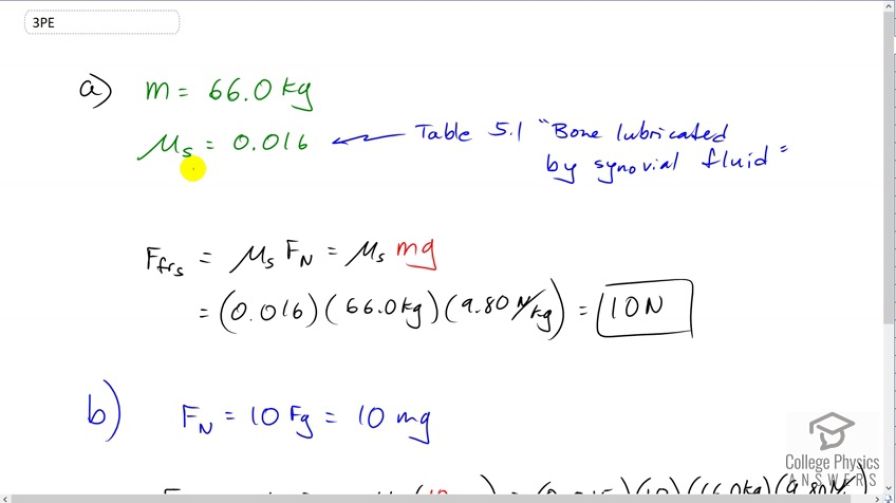Question
(a) What is the maximum frictional force in the knee joint of a person who supports 66.0 kg of her mass on that knee? (b) During strenuous exercise it is possible to exert forces to the joints that are easily ten times greater than the weight being supported. What is the maximum force of friction under such conditions? The frictional forces in joints are relatively small in all circumstances except when the joints deteriorate, such as from injury or arthritis. Increased frictional forces can cause further damage and pain.
Final Answer
a)
b)
Solution video
OpenStax College Physics for AP® Courses, Chapter 5, Problem 3 (Problems & Exercises)

vote with a rating of
votes with an average rating of
.
Calculator Screenshots
Video Transcript
This is College Physics Answers with Shaun Dychko. To find the maximum force of friction in a person’s joint, we will look up our coefficient of static friction and we’ll assume it’s static friction we’re looking for since that is the maximum possible friction force we can have between two surfaces. We’re looking for the entry in Table 5.1 that says “Bone lubricated by synovial fluid”, that is a joint in other words. So the static friction force will be the coefficient of static friction multiplied by the normal force and the normal force will be the person’s weight mg so we substitute that in for Fn. So that is 0.016 times 66 kilograms times 9.8 newtons per kilogram which gives 10 newtons. Now during exercise, we’re told that the normal force can be ten times the person’s weight. So we’re gonna plug ten times mg in for Fn now, we’re also going to change the coefficient of friction to be the coefficient of kinetic friction since we’re exercising in part b, we’ll assume that the joint is in motion. So the maximum kinetic friction force you’ll experience is the coefficient of kinetic friction times its normal force which is ten mg and that’s 0.015 times ten times 66 kilograms times 9.8 newtons per kilogram, which gives a kinetic friction force of 97 newtons.
